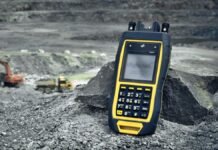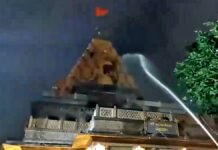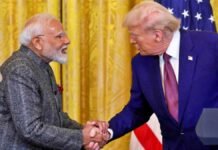
Key Points
- US President Donald Trump has announced the construction of the “Golden Dome,” a next-generation space-based air defense system.
- North Korean leader Kim Jong Un has issued a nuclear threat in response, warning of possible global nuclear war.
- The Golden Dome aims to make America and its allies nearly immune to missile attacks, including those launched from space.
- North Korea fears the system will also protect US allies South Korea and Japan, whom Pyongyang considers adversaries.
- The Golden Dome is inspired by Israel’s Iron Dome but promises far more advanced capabilities.
New Delhi: In a bold move that could reshape global security, US President Donald Trump announced on Tuesday the launch of the “Golden Dome” project a state-of-the-art air defense system designed to intercept and destroy missiles, even those launched from space. This ambitious initiative, which Trump described as “America’s ultimate shield,” has triggered a fierce reaction from North Korean leader Kim Jong Un, who swiftly threatened the US with nuclear retaliation unless the project is scrapped.
What Is the Golden Dome?
The Golden Dome is envisioned as the world’s most advanced missile defense system, drawing inspiration from Israel’s Iron Dome but taking the concept into orbit. Unlike traditional ground-based systems, the Golden Dome will be deployed in space, creating a protective barrier capable of detecting and neutralizing thousands of incoming missiles including nuclear warheads before they can reach US soil.
- Inspired by Iron Dome: Israel’s Iron Dome, operational since 2011, intercepts short-range rockets. The Golden Dome aims to counter threats from space and intercontinental ballistic missiles.
- Space-Based Defense: By operating in space, the system promises near-total protection for the US and its allies from missile attacks.
Why Is North Korea Threatened?
Kim Jong Un’s anger stems from both strategic and regional concerns:
- Threat to North Korean Arsenal: North Korea has invested heavily in modern missile and nuclear capabilities, using these as leverage against the US and its allies.
- Regional Impact: North Korea fears the Golden Dome could be extended to protect South Korea and Japan—two countries Pyongyang regards as enemies. This would undermine North Korea’s ability to threaten or intimidate them.
- Escalation Risk: Kim warned that deploying such a system could spark a nuclear arms race in space, increasing the risk of global conflict.
Kim Jong Un’s Response: Nuclear Threats and Global Warnings
In an official statement, Kim Jong Un condemned the US move as “reckless provocation” and warned that the deployment of the Golden Dome could trigger a nuclear war that “engulfs the world.” He demanded that President Trump abandon the project, threatening to respond with North Korea’s own nuclear arsenal if the US proceeds.
This is the first major confrontation between Kim Jong Un and President Trump in Trump’s second term, signaling a potential escalation in US-North Korea tensions.
The Bigger Picture: US, Allies, and Global Security
The US has justified the Golden Dome as a necessary step to protect its territory and allies from growing missile threats, particularly from adversaries like North Korea, Iran, and others developing advanced missile technology. If successful, the system could also be shared with South Korea and Japan, further strengthening US alliances in Asia.
However, the project’s announcement has raised concerns about a new arms race in space, with experts warning that other nations may accelerate their own space-based weapon programs in response.
President Trump’s Golden Dome announcement marks a dramatic shift in global defense strategy, promising unprecedented protection for the US and its allies but also raising the specter of nuclear confrontation. As North Korea threatens retaliation, the world watches anxiously to see if diplomacy can prevent a dangerous new chapter in the arms race this time, in space.


















































